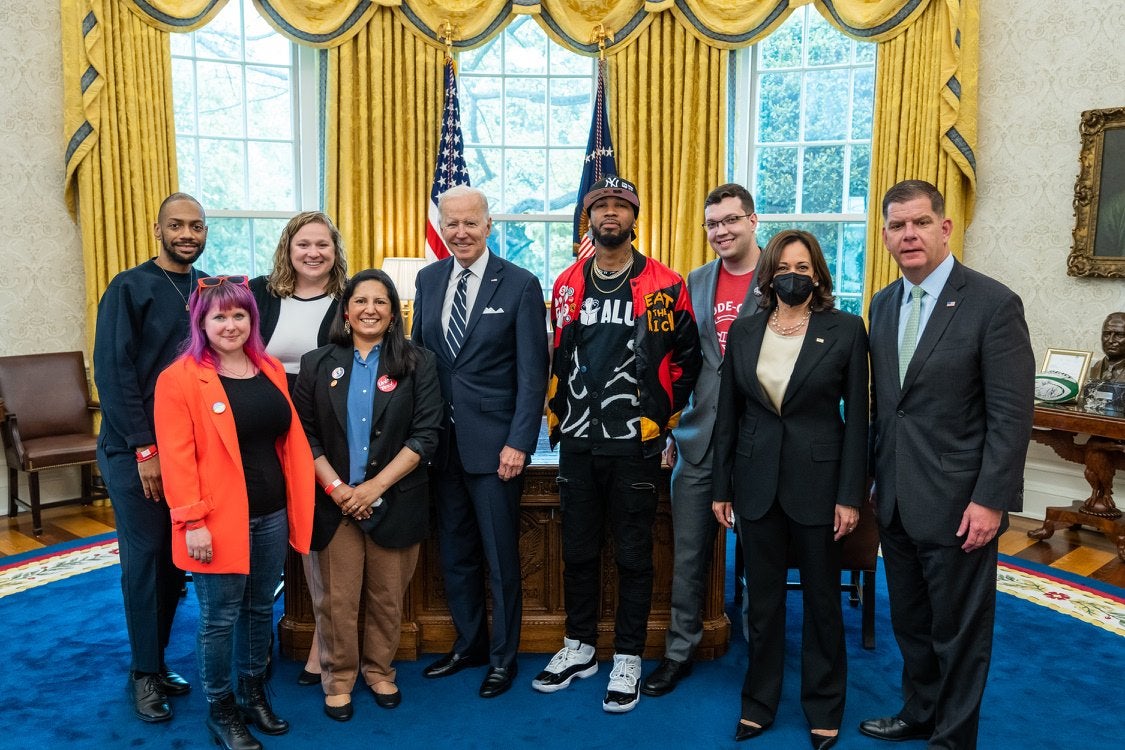Financial Times | ‘Union drip’ shows how the American labour movement is changing

Posted in In the News News
KI Executive Director Joe McCartin is featured in a piece about “union drip” and the changing face of the American labor movement.
“But the history of organised labour in the US shows that fashion statements can be a powerful uniting force, says Joseph McCartin, a Georgetown professor and executive director of the Kalmanovitz Initiative for Labor and the Working Poor. “A working-class movement really has to have a cultural dimension if it’s to be energetic,” he told me. “You don’t sustain the feeling of solidarity without cultural buttresses and reinforcements of that.”
McCartin says the “stylistic choices of young activists” may well be the ALU’s “qualitative innovation” that Hobsbawm considered so vital all those decades ago. Martin Luther King’s civil rights movement used blue jeans to signify solidarity in both the black and white working class. Later, countercultural fashions were used by workers to show defiance of authority in the Reagan era. Members of the Communications Workers of America have worn red on Thursdays for decades, in tribute to a fallen member who was killed on a picket line, but also as a signal to others. “Wearing red on Thursdays speaks to other coworkers who may be hesitant to show their solidarity,” the CWA’s website explains. “It says to them, ‘You are not alone, we stand shoulder to shoulder with you, we stand together’!”
McCartin likens the current shake-up in the union movement to how the auto and steel industries exploded in the 1930s, changing the face of the working class and creating company towns, much like Amazon, with its 1.6mn workers globally, is reshaping communities where it has large facilities. A pro-union president — Franklin D Roosevelt — helped those workers along, with the then newly-created National Labor Relations Act — the same framework under which Smalls is organising against Amazon today. “Workers had to see themselves as leading the movement,” McCartin said. “People who had the similar experiences, and who dressed like them, and who talked like them. These were the people who became the really successful organisers.”
